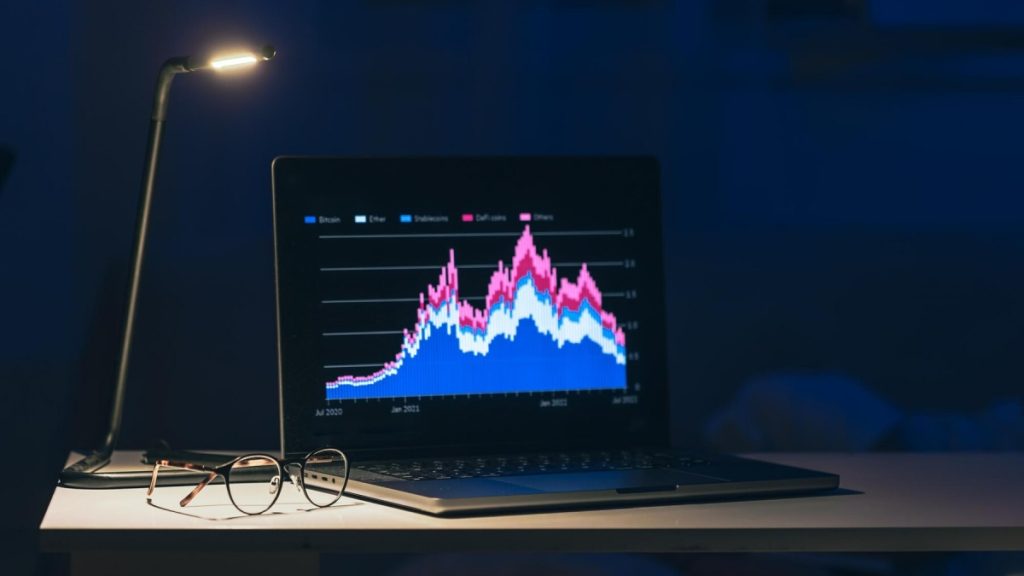The cryptocurrency ecosystem is constantly evolving, sustaining the creation of new and better projects that contribute to a decentralized future. Bitcoin shaped the usability of a cryptocurrency as a means of exchange, while Ethereum’s blockchain provided an outlook on the tools needed for decentralization.
Despite these contributions, the industry is still heavily challenged by the lack of regulation, scarce talent, and security risks. Therefore, adopting cryptocurrency and blockchain is far from happening, but a few projects aim to solve some of these problems. For example, the Solana Foundations created the open-source project Solana in 2017 as an alternative to slow and congested networks like Ethereum.
The cryptocurrency is one of the largest in terms of market capitalization, so if you want to buy Solana, know it’s a safe and stable addition to your portfolio. Moreover, the blockchain is one of the fastest and cheapest on the market, having reached impressive levels of scalability and safety, so let’s explore what’s so special about Solana.
What is Solana?
Solana’s idea started from its co-founders’ ideas of how network synchronization can benefit from a consensus mechanism like proof-of-history. The technology has a massive potential compared to what Bitcoin and Ethereum used since scaling more than 15 transactions would be challenging.
Solana’s proof-of-history makes the blockchain scalable, secure, and decentralized, but it also works in tandem with proof-of-stake. With the help of both consensus, validators verify transactions and rely on timestamps for the process to go faster than other networks.
Compared to Ethereum, Solana operates staking through groups of validators who process transactions, not individual ones. This is one reason why Solana is considered an Ethereum killer.
Solana’s architecture and developer tools
Solana is also an Ethereum competitor due to the numerous tools and technologies that allow developers to get creative and contribute to the network’s growth. For example, the Gulf Stream system allows the network to operate without a mempool, starting from a node’s approach to the transaction to the ledger for the slot. The protocol is what makes Solana’s transaction per second speed so incredible.
Solana’s Sealevel is what allows parallel smart contracts runtime to operate on the network. This feature improves the blockchain’s overall system performance by allowing Solana to process over 50,000 transactions without sacrificing scalability and network security.
Another interesting feature of Solana is given by Cloudbreak, a horizontally scalable database in which massive amounts of data are secured and managed. Through dynamic sharding, erasure coding, and memory-mapped files, the revolutionary technology makes Solana one of the best blockchains.
What about the Solana token?
The Solana token contributed to the growth of the blockchain due to its expanded utility. Users leverage SOL to secure the network as validators or delegators who stake. Validators process transactions and contribute to the consensus for protocol-based rewards. They can also participate in staking pools and validate the ledger.
Validators are rewarded through SOL, and those who stake the network receive half of the transaction fees in addition to the costs for emitting new tokens. Developers also receive SOL for selling their decentralized products and services. Therefore, the token is highly valuable in the Solana ecosystem.
However, this is not the only use case. Many investors turned their attention to Solana as an outside cryptocurrency due to the blockchain’s increasing popularity. Considering that the underlying technology is evolving, the coin gains more importance, so the cryptocurrency has a massive growth potential for the future.
What’s best between Solana and Ethereum?
There are many different aspects between Solana and Ethereum, but they’re also similar in several ways. Both have smart contracts and an increasing library of tools for creating decentralized applications and NFTs. Solana and Ethereum also rely on staking, although the first approaches the problem differently through proof-of-history.
Still, Ethereum is more expensive and slower when compared to the Solana blockchain. For example, Ethereum can process up to 15 transactions per second, a bit more than Bitcoin, whereas Solana has long exceeded this milestone.
On the other hand, the Ethereum blockchain is rapid when it comes to developments and upgrades. The Merge update proves how a significant change can contribute to a growing network. The update switched from PoW to PoS, making Ethereum highly scalable, more sustainable, and faster.
Should you invest in Solana?
There are several reasons why more people should invest in Solana. First, its high-speed and low-fee transactions compete with any other blockchain on the market. The cryptocurrency is also pretty stable, and the architecture supporting NFTs and smart contracts makes it valuable.
On the other hand, Solana has fewer projects than Ethereum or other blockchains, including decentralized applications, NFTs, and gaming apps. Moreover, since Solana doesn’t have a fixed number of coins as of total supply, its price can be affected by inflation, which doesn’t happen to cryptocurrencies with a limited coin supply.
Regardless of the pros and cons, Solana is a worthy investment for everyone who wants to diversify their portfolios due to its high potential and increasing number of projects. Due to low fees and incredible speed, more developers are turning to Solana, so we’ll see more projects on it in the future.
What about Solana’s competitors?
Although Solana is the biggest Ethereum competitor, the first blockchain also has its competitors, even if they’re less prevalent on the market. The Monad blockchain, for example, is a smart contract platform made for the Ethereum Virtual Machine (EVM). It has a faster time to finality and operates more transactions per second. There’s also Avalanche, one of the safest blockchains and high-security networks leveraging PoS.
What do you think about Solana?
Solana is one of the most revolutionary blockchain technologies that contribute to the growth of decentralization. With innovative technologies and a team behind it, Solana provides faster and cheaper transactions compared to many other ledgers. At the same time, developers chose it instead of Ethereum to deploy decentralized applications due to its friendlier infrastructure. Solana is also a great investment due to the considerable developments.
